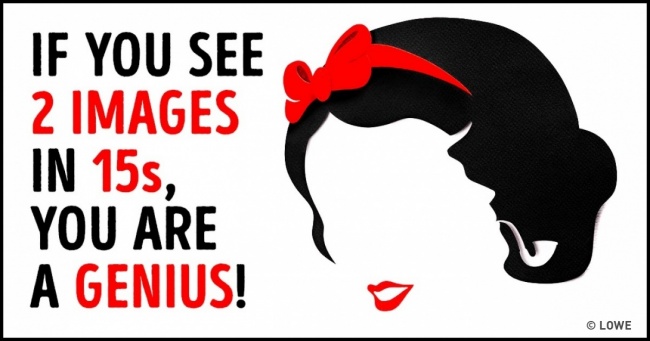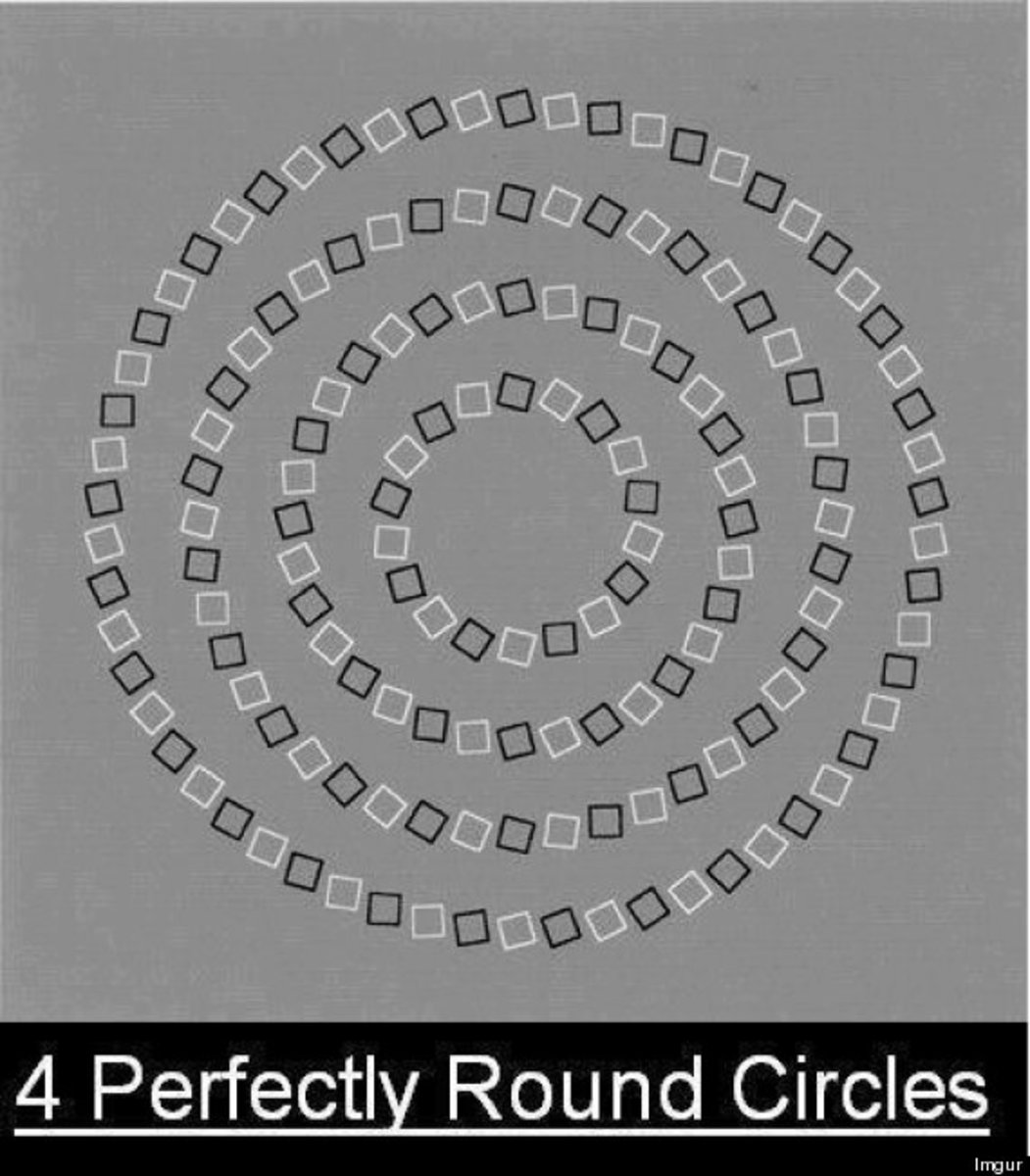I think my post today may be a little short on content, but don’t worry, I’ll make up for it with some eye-popping pictures. Before I talk about optical illusions however let’s take a moment to recall just how it is we can see anything.
Without going to any detail, light enters our eyes through the iris, which acts as a lens, and forms an upside down image at the back of the eye. Here light sensitive cells, rods and cones, pick up the light and sent signals to our brain which has to not only turn the image right side up but has to interpret what all of those signals mean. (See Image Below) Optical illusions work by playing with that interpretation by the brain in some way that makes us see things that aren’t really there, or miss something that is.
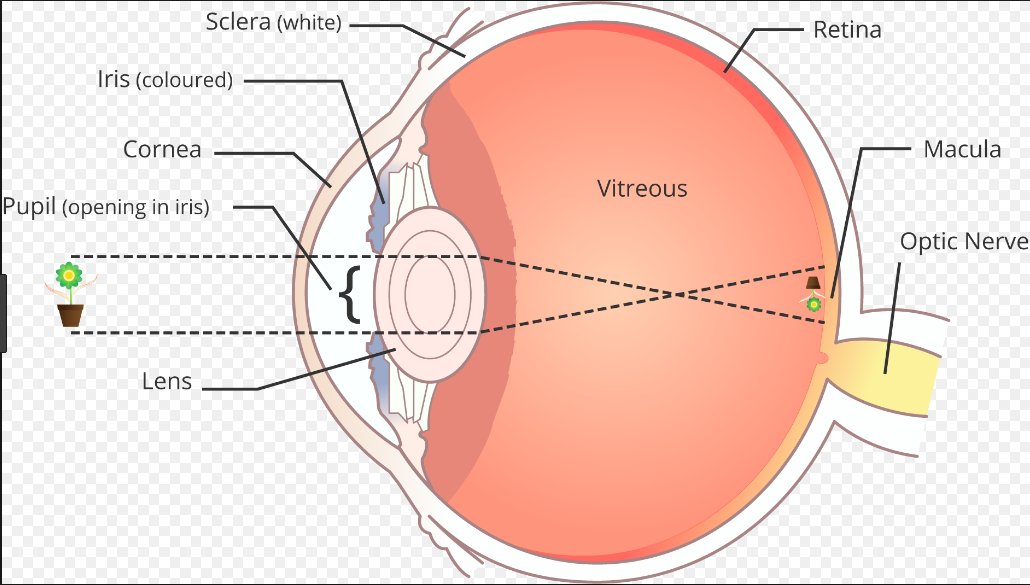
Let’s start with a simple example like the two small stick figures shown below.
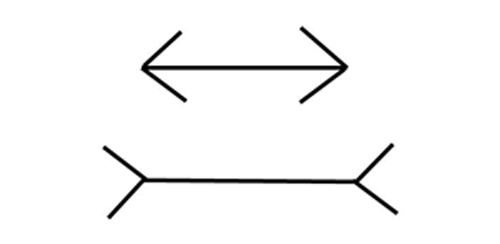
Obviously the entire lower figure is wider than the entire upper figure but is the lower horizontal line, and only the horizontal line longer. It certainly looks like it is doesn’t it! If you measure the two horizontal lines however you will find they are actually the same length. Because the entire lower figure is longer it makes our brain think that the lower horizontal line is longer. It’s the orientation of the < and > lines at the ends of the horizontal lines that trick our brain into thinking that the lower line is longer.
Let’s try the more complex yet similar example below.
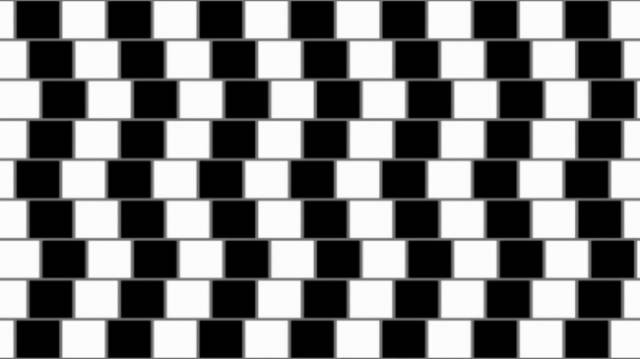
Here we have rows of alternating black and white boxes that are slightly offset from each other vertically. This offset causes our brain to see the horizontal lines as cock-eyed; certainly they don’t look like they’re parallel. But they are parallel, if you don’t think so take out a straight edge and see for yourself.
One more example of this type of illusion is shown below.
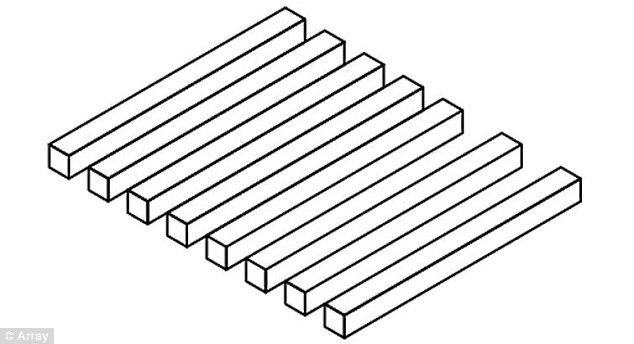
Here we have what appears to be a number of long square blocks but if you go to the left hand side first and count the number of blocks, then go to the right hand side and count again you’ll find that the left hand side has one more block! How is that possible?
What’s going on here? Well our brain can only concentrate on one side of the image at a time and the middle is just a bunch of lines so we don’t see anything wrong, we don’t see the trick unless we stop and carefully examine the situation.
Optical illusions such as these are designed to probe the limits of how our brains process the signals sent to it by our senses and psychologists use them to learn something about how our brains work. We can illustrate another way to trick the brain with an optical illusion like the familiar one below.
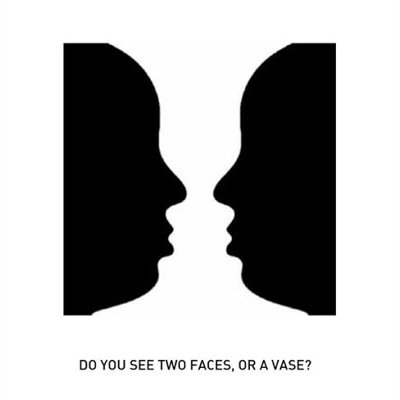
Which do you see, the two faces or the vase? Of course the image combines both but the trick here is that once our brain has found one interpretation it stops looking for any other! I think that’s a pretty important fact about the brain we just learned don’t you. Let’s try another, similar one.

Here the trick is that, upside down the rabbit has become a mustachioed man. If you only look at one image or the other it’s not so easy to see. Again our brain accepts one interpretation and that’s good enough. It isn’t designed to look for a second.
The last type of optical illusion I’d like to illustrate is the sort where our brain is tricked into seeing motion where there is none. Check out this one.
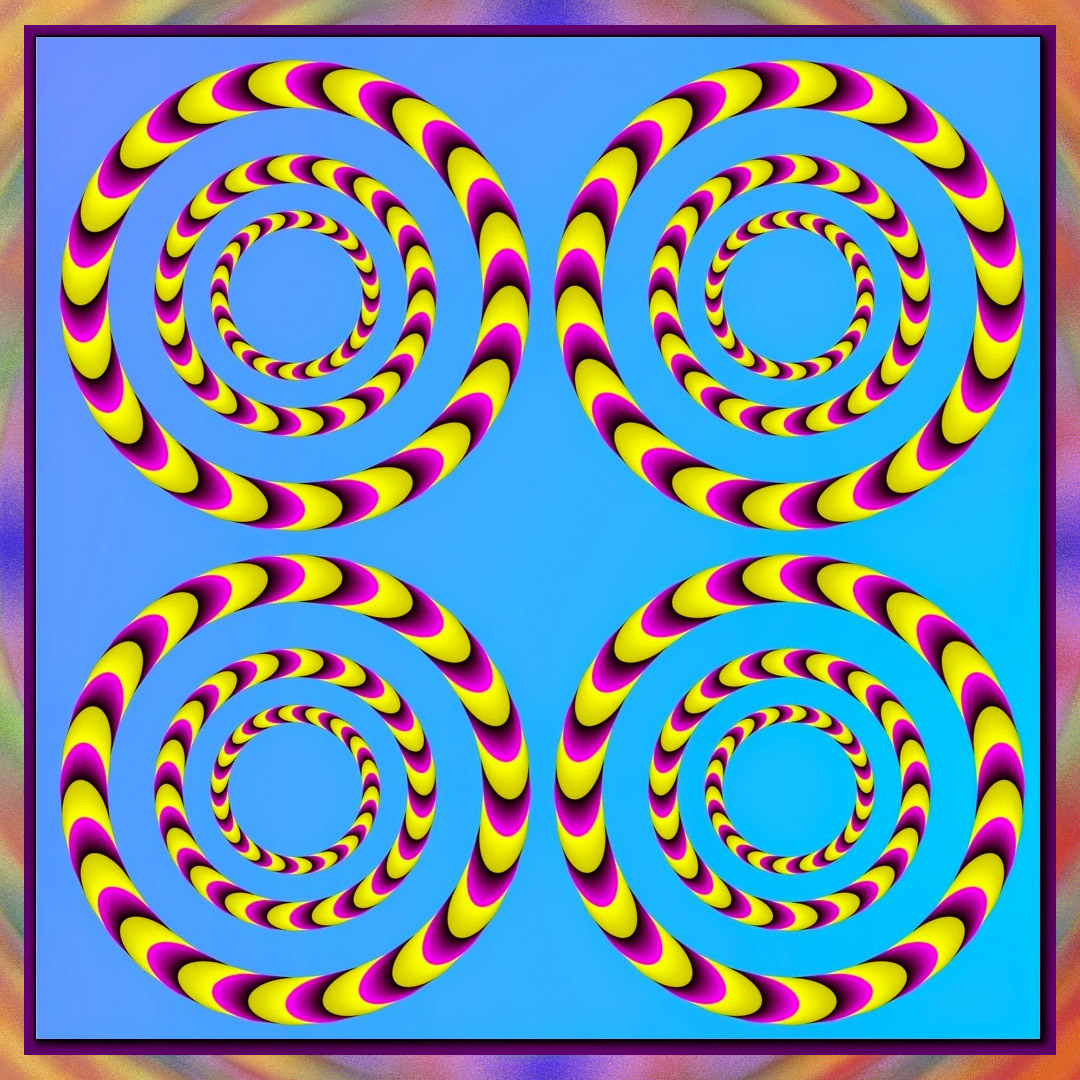
No this is not a video, nothing is moving trust me but it sure looks like those circles are rotating doesn’t it? The trick here is obvious, by composing an image out of multiple connected curves our brain tries to follow those curves as if they were moving.
Optical illusions such as these are an important tool in studying the brain, how it perceives and reacts to the reality around us, but let’s be honest, they’re also really cool. I’ll leave you with a few more examples. See if you can figure out which type each is.

